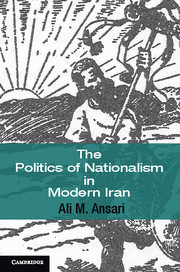3 - The Age of Extremes
Published online by Cambridge University Press: 05 November 2012
Summary
O Cyrus, great King, King of Kings, Emperor of the Achaemenians, monarch of the land of Iran. I, the Shahanshah of Iran, offer thee salutations from myself and from our nation.
We are here to acclaim Cyrus, the Great, the immortal of Iran, the founder of the most ancient empire of the World; to praise Cyrus, the extraordinary emancipator of History; and to declare that he was one of the most noble sons of the Humanity. Cyrus, we gather today around the tomb in which you eternally rest to tell you: Rest in Peace, for we are well awake and we will always be alert in order to preserve your proud legacy. We promise to preserve forever the traditions of humanism and goodwill, with which you founded the Persian Empire: traditions which made our people be the carrier of message transmitted everywhere, professing fraternity and truth.
Mohammad Reza Shah, eulogy at the tomb of Cyrus the Great, Pasargadae, 12 October 1971People are beginning to look with greater nostalgia on the myth of the good times of Reza Shah and an efficient authoritarian government would probably be welcomed, inwardly if not outwardly
Legacy
The decade from 1924 through to 1934 can fairly lay claim to marking the high point of enlightenment nationalism as defined by the Constitutionalists. Many of the ideas that had been developed and considered over the previous three decades had finally been realized under the direction, if not the inspiration of Reza Shah. By all accounts it was a remarkably productive period combining the consolidation of the state with its development and extension in ways the Constitutionalists could only have aspired to, and it was very much a collective achievement. If some had compromised regarding the form of government and the continuation of the monarchy in the family of Reza Khan, this was regarded at the time as a price worth paying to effect the national renaissance..
- Type
- Chapter
- Information
- The Politics of Nationalism in Modern Iran , pp. 110 - 197Publisher: Cambridge University PressPrint publication year: 2012

